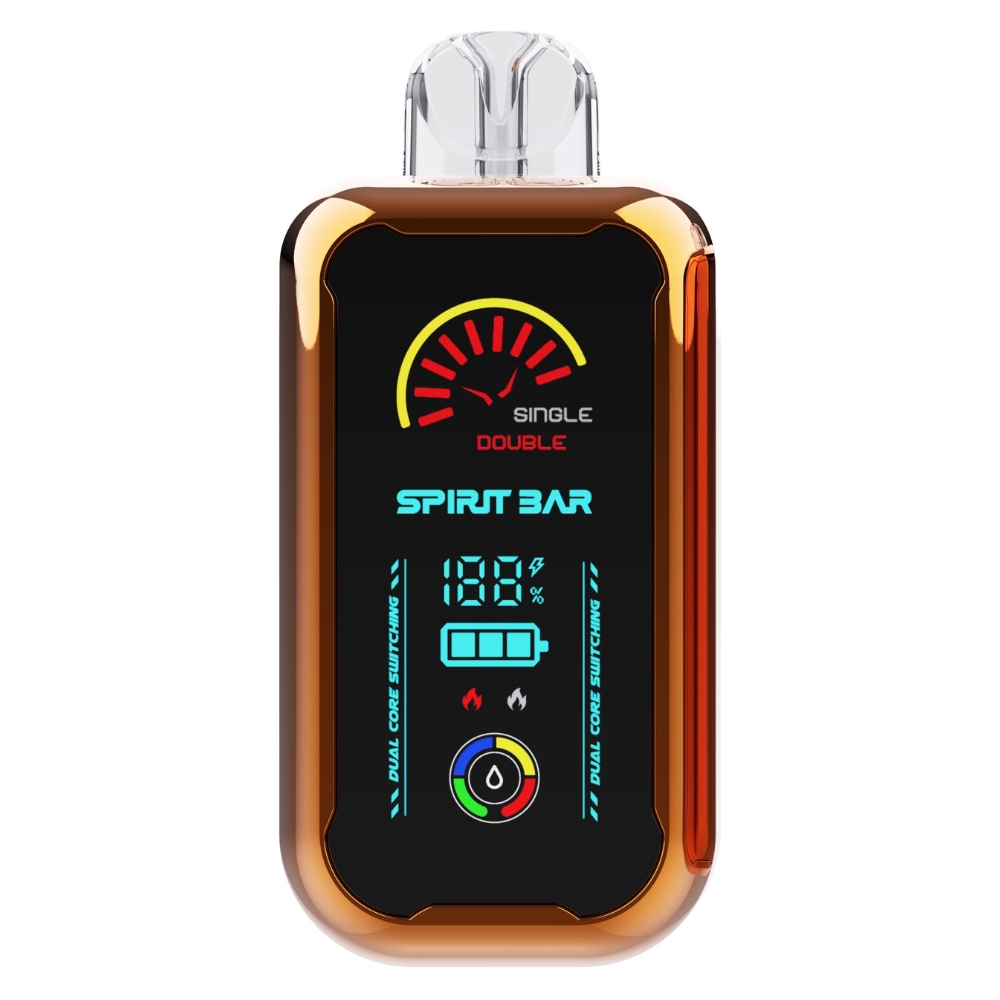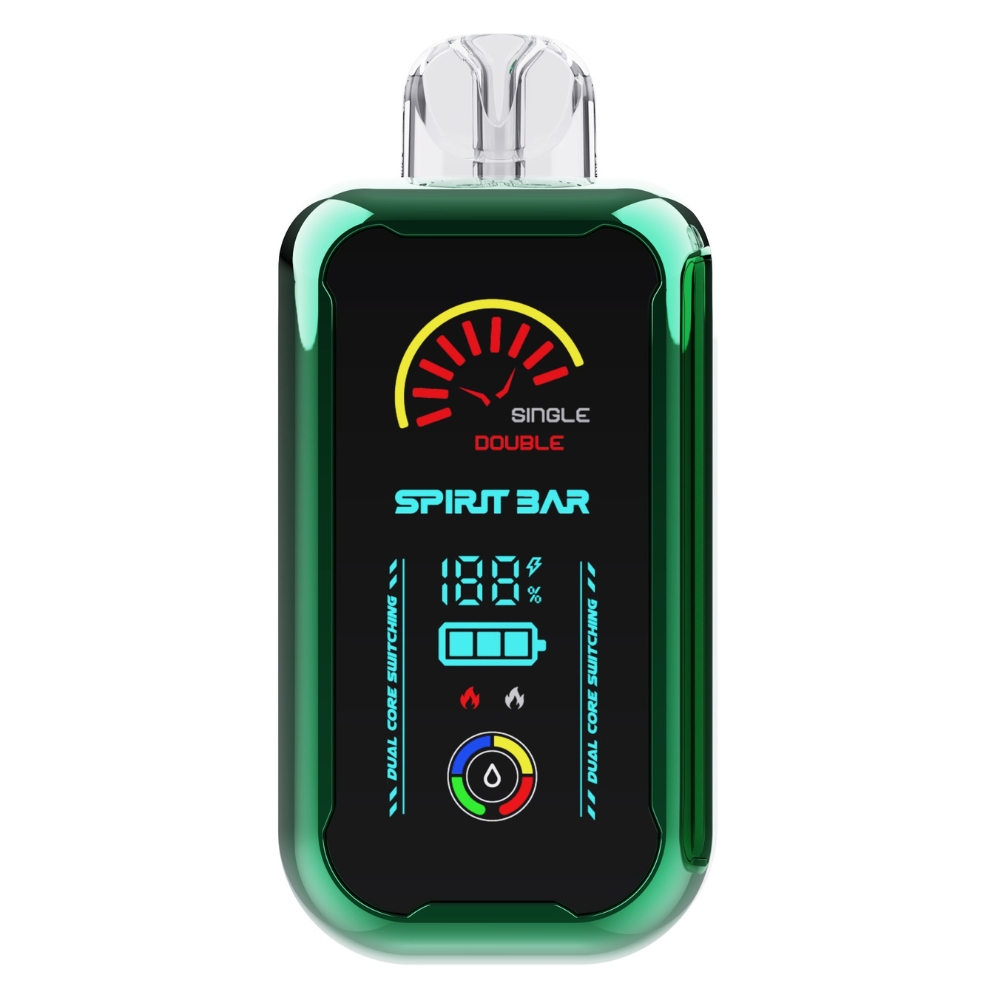What Can You Inhale from Vaping? A Brief Overview
If you’re one of the millions of people who vape, you may be wondering what exactly you’re inhaling. While vaping is often marketed as a safer alternative to smoking, there are still concerns about the potential health effects of inhaling vape liquids. Recent studies have found unexpected chemical combinations in vape liquids that can activate cellular irritant receptors, leading to potential respiratory issues.
Vaping-related lipoid pneumonia is another potential risk of inhaling vape liquids. This condition is caused by inhaling oily substances found in e-liquids, which can spark an inflammatory response in the lungs. Symptoms of lipoid pneumonia can include chronic cough, shortness of breath, and coughing up blood or blood-tinged mucus. It’s important to note that while vaping may be less harmful than smoking, it’s still not considered safe, and there are potential risks associated with inhaling vape liquids.
If you’re concerned about the potential health effects of vaping, it’s important to do your research and stay informed. By understanding what you’re inhaling and the potential risks associated with vaping, you can make an informed decision about whether or not it’s the right choice for you.
Understanding Vaping
https://www.youtube.com/watch?v=OMNUfcIXFrY&embed=true
If you’re new to vaping, it’s important to understand what it is and how it works. Vaping is the act of inhaling smoke-looking vapor from an electronic cigarette or vape device. Unlike traditional cigarettes, vaping simulates smoking but in a less harmful manner.
A flavored nicotine liquid called vape juice or e-juice is what’s in a vape, but not all vapes contain nicotine. The user decides the flavor and amount of nicotine they wish to use, if any at all. When you inhale from a vape device, the liquid is heated up until it turns into a vapor that you inhale.
It’s important to note that while vaping is less harmful than smoking, it’s still not safe. E-cigarettes heat nicotine (extracted from tobacco), flavorings, and other chemicals to create an aerosol that you inhale. Regular tobacco cigarettes contain 7,000 chemicals, many of which are toxic.
According to a study by CBC News, vaping may contain potentially toxic compounds that differ from the basic vaping ingredients, usually propylene glycol and glycerin, or the added flavoring chemicals. While it’s not entirely clear what you’re inhaling when you vape, it’s important to understand that there may be risks involved.
In summary, vaping is the act of inhaling smoke-looking vapor from an electronic cigarette or vape device. It’s less harmful than smoking, but it’s still not safe. When you vape, you inhale a liquid that’s heated up until it turns into a vapor that you inhale. While it’s not entirely clear what you’re inhaling when you vape, it’s important to understand that there may be risks involved.
Components of Vape Juice
https://www.youtube.com/watch?v=FRAB6DR17cM&embed=true
When it comes to vaping, the liquid that you inhale is called vape juice. Vape juice is a mixture of several different components that work together to create the vapor that you inhale. Here are the primary components of vape juice:
-
Propylene Glycol (PG): PG is a synthetic compound that is commonly used in food, cosmetics, and pharmaceuticals. It is used in vape juice to create a smooth and consistent vapor.
-
Vegetable Glycerin (VG): VG is a natural compound that is derived from vegetable oil. It is used in vape juice to create a thicker vapor and add sweetness to the flavor.
-
Flavorings: Flavorings are added to vape juice to create a variety of different flavors. These can range from simple fruit flavors to more complex blends that mimic the taste of desserts or other foods.
-
Nicotine: Nicotine is an addictive substance that is found in tobacco. It is added to some vape juices to provide a similar experience to smoking cigarettes.
-
Water: Water is added to vape juice to help create a consistent vapor and dilute the other components.
It is important to note that some vape juices may also contain potentially harmful chemicals, such as vitamin E acetate, which has been linked to lung injuries. When choosing vape juice, it is important to look for products that have been tested and approved by regulatory agencies.
Potential Health Risks of Vaping
Vaping is often marketed as a safer alternative to smoking, but it is not without its risks. Here are some potential health risks associated with vaping:
Lung Damage
Vaping can cause lung damage due to the inhalation of harmful chemicals. According to the NIH News in Health, vaping exposes the lungs to a variety of chemicals, including nicotine, flavorants, and other ingredients that are added to vaping liquids. These chemicals can cause inflammation and irritation in the lungs, which can lead to serious lung damage over time.
EVALI
EVALI (e-cigarette, or vaping, product use associated lung injury) is a serious lung condition that vaping can cause. It causes widespread damage to your lungs and gives you symptoms like coughing, shortness of breath, and chest pain. EVALI can be fatal. According to the Cleveland Clinic, EVALI is caused by inhaling harmful chemicals, such as vitamin E acetate, which is sometimes added to vaping liquids.
Addiction
Nicotine is highly addictive, and vaping liquids often contain high levels of nicotine. According to Health.com, vaping can be just as addictive as smoking, and it can be difficult to quit once you start. Addiction to nicotine can have serious health consequences, including increased risk of heart disease and stroke.
Other Health Risks
Vaping has also been associated with other health risks, including increased risk of heart attack and chronic obstructive pulmonary disease (COPD). According to Verywell Health, recent studies have found that harmful substances in many vaping products could increase the risk of these health problems, especially among teens and young adults.
In conclusion, while vaping may seem like a safer alternative to smoking, it is not without its risks. If you are considering vaping, it is important to be aware of the potential health risks and make an informed decision about whether it is right for you.
Nicotine Inhalation
When you vape, you inhale a mixture of chemicals, including nicotine. Nicotine is an addictive substance found in tobacco products, and it is also present in most e-cigarettes and vaping products.
Nicotine can be absorbed into your bloodstream through the lungs when you inhale it. It then travels to your brain, where it can cause a release of dopamine, a neurotransmitter that can create feelings of pleasure and reward. This is why nicotine is so addictive and why it can be challenging to quit smoking or vaping.
The amount of nicotine in e-cigarettes and vaping products can vary widely, and some products contain much higher levels of nicotine than traditional cigarettes. According to a study published in the journal Nicotine & Tobacco Research, some e-cigarettes can deliver as much nicotine as a pack of cigarettes or more.
While nicotine itself is not considered a carcinogen, it can still have harmful effects on your health. Nicotine can cause an increase in heart rate and blood pressure, which can put additional strain on your cardiovascular system. It can also cause nausea, dizziness, and headaches, especially in people who are not used to nicotine.
Moreover, nicotine can be particularly harmful to developing brains, which is why the U.S. Food and Drug Administration (FDA) has banned the sale of e-cigarettes to minors. Nicotine exposure during adolescence can harm the parts of the brain responsible for attention, learning, and impulse control, and it can increase the risk of addiction to other substances later in life.
Therefore, it is important to be aware of the risks associated with nicotine inhalation when using e-cigarettes or vaping products. If you are trying to quit smoking or vaping, there are many resources available to help you quit, including nicotine replacement therapy, counseling, and support groups.
Flavoring Chemicals Inhalation
When you vape, you inhale not only nicotine but also a variety of flavoring chemicals. These chemicals are used to create different flavors, such as fruit, candy, and dessert flavors. While they may make vaping more enjoyable, they also pose potential risks to your health.
According to a CBC News article, there are more than 7,000 flavoring chemicals used in vaping products. Many of these chemicals have not been studied extensively, so their long-term effects on health are unknown.
Some of the flavoring chemicals used in vaping products have been linked to respiratory problems. For example, diacetyl, a chemical used to create buttery flavors, has been linked to a condition called popcorn lung, which causes scarring in the lungs and makes it difficult to breathe. Formaldehyde, another chemical used in some vaping products, can cause lung damage and is a known carcinogen.
It’s important to note that not all flavoring chemicals used in vaping products are harmful. However, it’s difficult for consumers to know which chemicals are safe and which are not. The best way to protect yourself is to avoid vaping altogether or to choose vaping products that do not contain flavoring chemicals.
Metal Particles Inhalation
When you inhale from vaping, you could be inhaling metal particles. A study by the National Institute of Environmental Health Sciences found that vaping devices can expose users to toxic metals like lead and chromium [1]. These metals are often found in the heating coil of e-cigarettes, which can release them into the vapor.
While the levels of metal particles inhaled from vaping are below established safety limits with normal use and are of minor health concern [2], long-term exposure to these metals can lead to serious health problems. For example, inhalation of lead can cause damage to the nervous system, while inhalation of chromium can lead to lung cancer [3].
It’s important to note that the risk of inhaling metal particles from vaping is not limited to e-cigarettes. A study funded by the Colorado School of Public Health found that metal exposure from cannabis vaping poses a significant public health concern [4]. The study detected high concentrations of lead, chromium, nickel, and tin in cannabis vapors, which are often inhaled by users.
To minimize your risk of inhaling metal particles from vaping, it’s recommended that you use high-quality vaping devices and avoid using devices with heating coils made from unknown materials. Additionally, it’s important to follow the manufacturer’s instructions for use and maintenance of your vaping device to reduce the risk of metal particle exposure.
[1] https://factor.niehs.nih.gov/2022/2/feature/3-feature-e-cigarettes-and-toxic-metals
[2] https://www.athra.org.au/blog/2018/11/03/metals-inhaled-from-vaping-are-not-a-health-risk/
[3] https://www.hopkinsmedicine.org/health/wellness-and-prevention/what-does-vaping-do-to-your-lungs
[4] https://coloradosph.cuanschutz.edu/research-and-practice/centers-programs/chwe/about-us/newsroom/public-health-main-site-news/heavy-metal-inhalation-in-cannabis-users-new-study-funded-at-the-colorado-school-of-public-health
Other Harmful Substances Inhalation
In addition to nicotine, vape aerosol contains several harmful substances that you can inhale. According to the American Lung Association, secondhand emissions from e-cigarettes contain “nicotine; ultrafine particles; flavorings such as diacetyl, a chemical linked to serious lung disease; volatile organic compounds such as benzene, which is found in car exhaust; and heavy metals, such as nickel, tin, and lead.”
Ultrafine particles are small enough to penetrate deep into your lungs and cause inflammation. Benzene is a known carcinogen, and long-term exposure can lead to leukemia and other types of cancer. Heavy metals can accumulate in your body over time and cause health problems, including damage to your organs.
Some e-cigarette flavors can contain aldehydes, which are one of the main irritants in smoke and can cause coughing and inflammation. According to CBC News, aldehydes are not stable and can break down into other harmful substances when heated, such as formaldehyde, which is a known carcinogen.
Additionally, vaping liquids can contain other harmful substances, such as propylene glycol, which can cause respiratory irritation, and acrolein, which can cause lung damage.
It is important to note that the long-term health effects of inhaling these substances are not yet fully understood, and more research is needed to determine the risks associated with vaping. However, it is clear that vaping is not a safe alternative to smoking and can still cause harm to your health.
Comparing Vaping and Traditional Smoking
When it comes to inhaling substances, there are significant differences between traditional smoking and vaping. Traditional smoking involves burning tobacco, which releases smoke that contains thousands of chemicals, many of which are toxic. On the other hand, vaping uses a battery-operated device to heat up a liquid, which turns into a vapor that is inhaled.
One of the most significant differences between vaping and smoking is the number of chemicals involved. Traditional cigarettes contain approximately 7,000 chemicals, many of which are harmful to your health. In contrast, e-cigarettes typically contain fewer chemicals, although the exact number and type of chemicals can vary depending on the brand and type of e-cigarette.
Another difference between vaping and smoking is the way the substances are delivered to your body. When you smoke a cigarette, the smoke enters your lungs and is absorbed into your bloodstream. In contrast, when you vape, the vapor is absorbed through your mouth and throat before entering your lungs. This means that vaping may be less harmful to your lungs than smoking, although there is still some risk of lung damage.
One of the main benefits of vaping over smoking is that e-cigarettes do not produce the same amount of secondhand smoke as traditional cigarettes. This means that vaping is generally considered to be safer than smoking around other people.
Overall, while vaping is not completely risk-free, it is generally considered to be less harmful than traditional smoking. However, it is important to remember that vaping can still have negative health effects, and it is not a safe alternative to quitting smoking altogether. If you are trying to quit smoking, it is best to talk to your doctor about the most effective methods to help you quit.
The Debate on Vaping Safety
Vaping, or the use of electronic cigarettes, has become increasingly popular in recent years. However, there is still much debate over the safety of vaping. While some believe that vaping is a safer alternative to smoking traditional cigarettes, others argue that it is not without its risks.
One of the main concerns with vaping is the potential for lung damage. According to a Johns Hopkins Medicine article, research on the effects of vaping on the lungs is still in the initial stages. However, it is clear that using e-cigarettes can be harmful to your lungs. The aerosol produced by vaping can contain harmful chemicals and particles that can cause inflammation and damage to the lungs.
Another concern is the addictive nature of vaping. E-cigarettes contain nicotine, which is highly addictive. In fact, some e-cigarettes contain higher levels of nicotine than traditional cigarettes. This can make it difficult for users to quit vaping and can lead to a dependence on nicotine.
There is also debate over the long-term effects of vaping on overall health. While some studies have suggested that vaping is less harmful than smoking traditional cigarettes, others argue that the long-term effects of vaping are still unknown. It is possible that there could be health risks associated with vaping that are not yet fully understood.
Overall, the debate on vaping safety is ongoing. While some believe that vaping is a safer alternative to smoking traditional cigarettes, others argue that it is not without its risks. It is important to do your own research and make an informed decision about whether or not to vape.
Vaping and Its Impact on Youth
Vaping has become increasingly popular among young people in recent years. According to the Centers for Disease Control and Prevention (CDC), over 3.6 million youth in the United States use e-cigarettes. While many believe that vaping is a safer alternative to smoking traditional cigarettes, it is important to understand the potential risks associated with this practice.
One of the main concerns with vaping is the chemicals that are inhaled. Vaping liquids typically contain nicotine, flavorings, and other additives. When heated, these chemicals can produce harmful byproducts, such as formaldehyde, acetaldehyde, and acrolein. These chemicals can cause damage to the lungs, throat, and other organs over time.
In addition, vaping can have a negative impact on brain development in young people. Nicotine is highly addictive and can harm brain development, which continues until about age 25. It can impact attention, learning, mood, and impulse control. Nicotine use in adolescence may also increase the risk for future addiction to other drugs.
It is important for parents, educators, and healthcare providers to talk to young people about the potential risks associated with vaping. Encourage them to make informed decisions about their health and well-being. If you or someone you know is struggling with nicotine addiction, there are resources available to help. The American Lung Association offers a cessation program called Not On Tobacco (N-O-T) designed to help youth ages 14 to 19 quit e-cigarettes.


